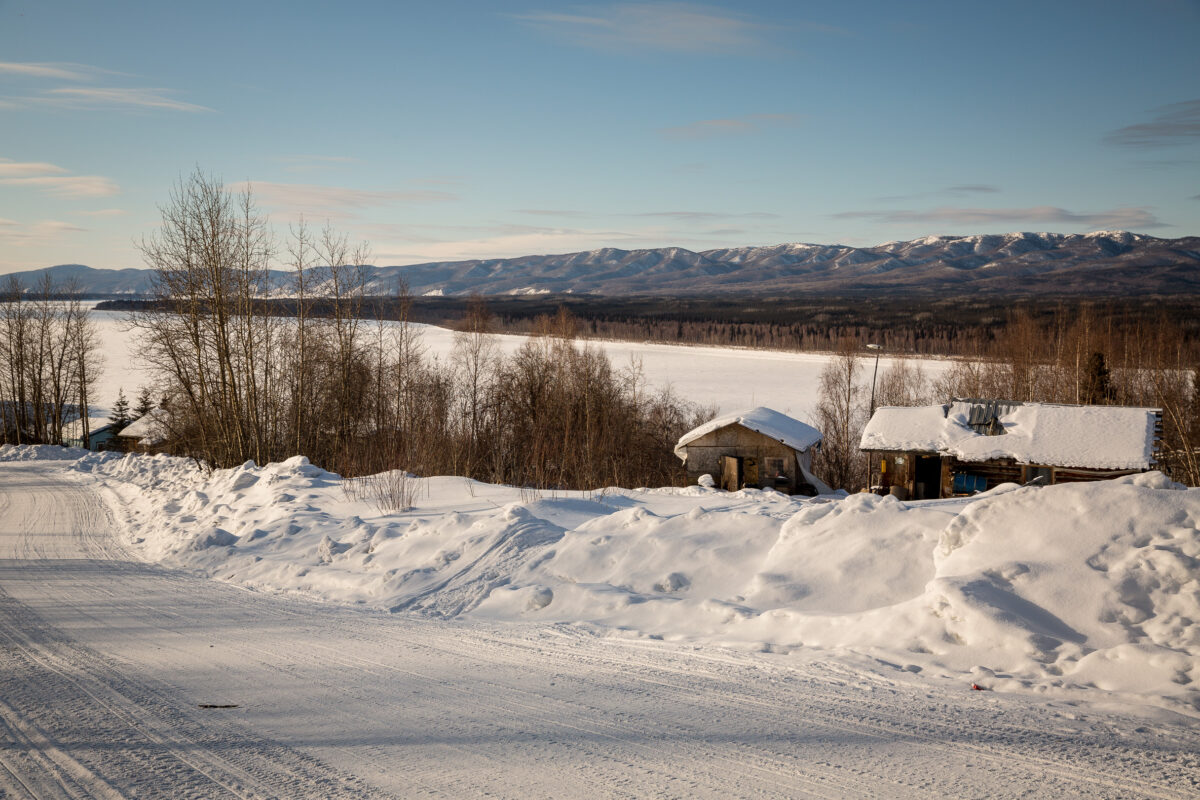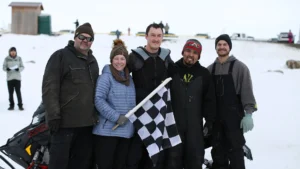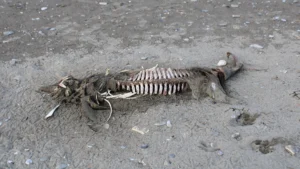With your support, the news department of KNOM Radio Mission brings to our rural, Western Alaska listeners — and our web viewers at knom.org — the local and statewide events and issues that are impacting their lives, as well as crucially-needed weather and travel information. As has been the case for more than four decades, KNOM’s weekday newscasts thus are a snapshot of our corner of Alaska, and in wintertime, our news stories offer a special glimpse into what makes our region so unique — and, at times, so challenging. Here are just a few examples.
In mid-January, KNOM news reported that a series of holes had opened on the normally-solid ice of Alaska’s mighty Yukon River (pictured), particularly in the area near Kotlik (COT-lick), a community in the northern Yukon Delta, well within KNOM country. One of the river holes was half a football field wide and posed a threat for local residents, especially since frozen rivers like the Yukon are often used as convenient transportation routes for snowmachine riders. Thanks to you, our radio signal and online channels helped spread the word about the ice hazard and about local safety efforts to mark the river’s dangerous spots, which had become partially obscured through thin layers of re-freezing and snowfall.

Back in Nome, meanwhile, another story focused on a different sort of wintertime hazard: darkness. KNOM news detailed a new initiative of Nome Public Schools to outfit schoolchildren with battery-powered lights and reflectors for their outerwear and backpacks, to make them much more easily visible when walking to and from school; as our story noted, about half of local elementary school students walk to school each day. Since the sunrise in Nome happens after the start of the school day for much of the academic year (it’s just shy of 12 noon on the winter solstice!), there’s a very real need for greater visibility. Our story informed local families about the school district’s efforts, as well as future plans to develop a more visible school crosswalk.

Finally, just before Christmas (in a story developing as our January Static was being written), KNOM news reported the fascinating case of a seal that had wandered through the near-shore ice of the Bering Sea and onto Nome’s coastline, becoming stranded. The seal was just a young “pup,” but as a bearded seal, or ugruk (OOH-gruck) — a species often hunted as a subsistence animal in Alaska — it was still quite large, weighing about 200 pounds (requiring four people to help move it to safety). Ultimately, local officials decided to return it to the wild; aided by local subsistence hunters, the seal was hauled to a carefully-chosen location along Nome’s shoreline and released into the frozen Bering Sea. (Seal photo credit: Gay Sheffield, University of Alaska-Fairbanks Alaska Sea Grant.)
For all of these stories — and lots more news, and snapshots of rural Alaska — follow the links in this story, above, and explore our news feed on this website.





